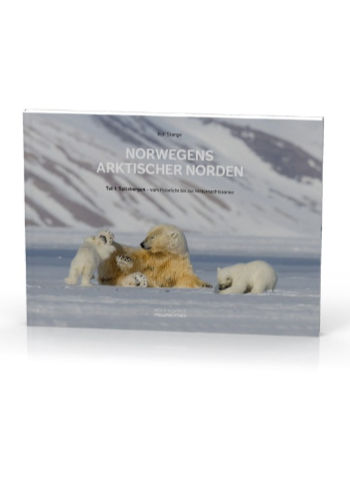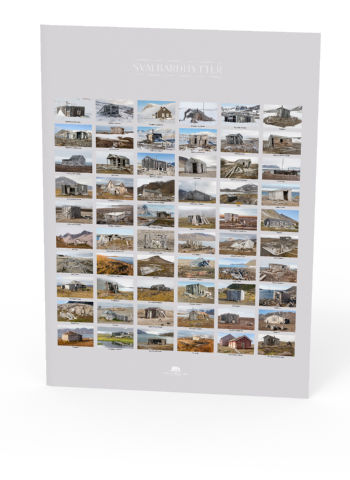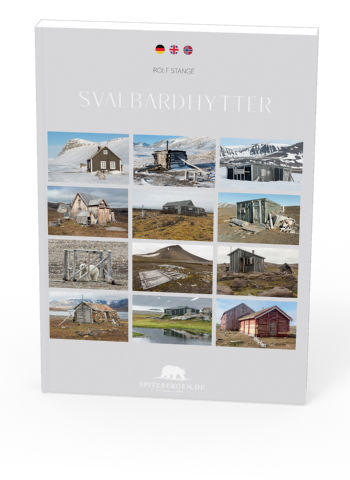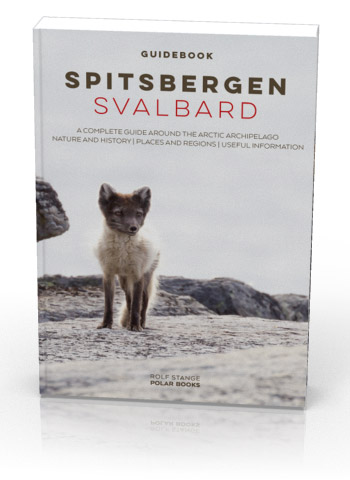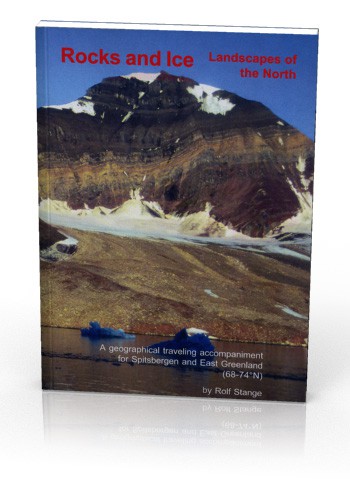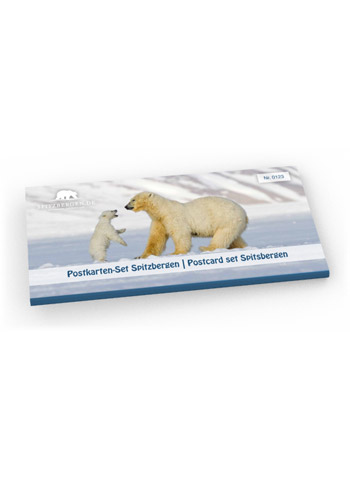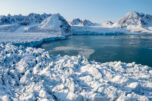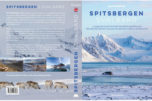-
current
recommendations- Liefdefjord
New page dedicated to one of Spitsbergen's most beautiful fjords. Background information and many photos.
- New Spitsbergen guidebook
The new edition of my Spitsbergen guidebook is out and available now!
- Liefdefjord
New page dedicated to one of Spitsbergen's most beautiful fjords. Background information and many photos.
Page Structure
-
Spitsbergen-News
- Select Month
- June 2025
- May 2025
- April 2025
- March 2025
- February 2025
- January 2025
- December 2024
- November 2024
- October 2024
- September 2024
- August 2024
- July 2024
- June 2024
- May 2024
- April 2024
- March 2024
- February 2024
- January 2024
- December 2023
- November 2023
- October 2023
- September 2023
- August 2023
- July 2023
- June 2023
- May 2023
- April 2023
- March 2023
- February 2023
- January 2023
- December 2022
- November 2022
- October 2022
- September 2022
- August 2022
- July 2022
- June 2022
- May 2022
- April 2022
- March 2022
- February 2022
- January 2022
- December 2021
- November 2021
- October 2021
- September 2021
- August 2021
- July 2021
- June 2021
- May 2021
- April 2021
- March 2021
- February 2021
- January 2021
- December 2020
- November 2020
- October 2020
- September 2020
- August 2020
- July 2020
- June 2020
- May 2020
- April 2020
- March 2020
- February 2020
- January 2020
- December 2019
- November 2019
- October 2019
- September 2019
- August 2019
- July 2019
- June 2019
- May 2019
- April 2019
- March 2019
- February 2019
- January 2019
- December 2018
- November 2018
- October 2018
- September 2018
- August 2018
- July 2018
- June 2018
- May 2018
- April 2018
- March 2018
- February 2018
- January 2018
- December 2017
- November 2017
- October 2017
- September 2017
- August 2017
- July 2017
- June 2017
- May 2017
- April 2017
- March 2017
- February 2017
- January 2017
- December 2016
- November 2016
- October 2016
- September 2016
- August 2016
- July 2016
- June 2016
- May 2016
- April 2016
- March 2016
- February 2016
- January 2016
- December 2015
- November 2015
- October 2015
- September 2015
- August 2015
- July 2015
- June 2015
- May 2015
- April 2015
- March 2015
- February 2015
- January 2015
- December 2014
- November 2014
- October 2014
- September 2014
- August 2014
- July 2014
- June 2014
- May 2014
- April 2014
- March 2014
- February 2014
- January 2014
- December 2013
- November 2013
- October 2013
- September 2013
- August 2013
- July 2013
- June 2013
- May 2013
- April 2013
- March 2013
- February 2013
- January 2013
- December 2012
- November 2012
- October 2012
- September 2012
- August 2012
- July 2012
- June 2012
- May 2012
- April 2012
- March 2012
- February 2012
- January 2012
- December 2011
- November 2011
- October 2011
- September 2011
- August 2011
- May 2011
- April 2011
- March 2011
- February 2011
- January 2011
- December 2010
- November 2010
- September 2010
- August 2010
- July 2010
- June 2010
- May 2010
- April 2010
- March 2010
- February 2010
- November 2009
- October 2009
- August 2009
- July 2009
- June 2009
- May 2009
- April 2009
- March 2009
- February 2009
- January 2009
- December 2008
- November 2008
- October 2008
- August 2008
- July 2008
- June 2008
- May 2008
- April 2008
- March 2008
- February 2008
- April 2000
- Select Month
-
weather information
-
Newsletter

| Guidebook: Spitsbergen-Svalbard |
Home
→ Spitsbergen information
→ Arctic traveling – some practical hints
→ New regulations 2025
Svalbard: new rules introduced in January 2025
Landing in national parks and nature reserves, distances to polar bears and more
On 1 January 2025, some important new rules came into force. On the one hand they are important, but on the other hand they seem to cause a lot of confusion and questions, so I would like to summarise the most important changes here. Especially as some nonsense is now circulating.
The main issues are landings in protected areas, distances from polar bears and other animals and bird colonies. But it’s also about ship sizes, passenger numbers, heavy fuel oil, drones and more.
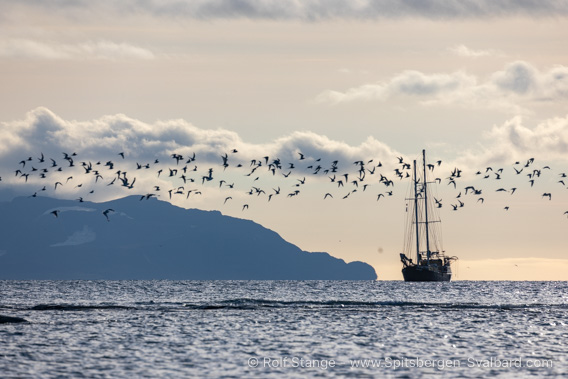
Even with the new rules, Svalbard remains an interesting destination.
This is a lot of text, but it is also quite extensive, complicated and confusing. The different rules are spread over several different laws, some of which you have to look at both the older original versions and the current updates to really understand what is going on. All of this is only available in Norwegian (in various places on lovdata.no, the official Norwegian law gazette). I have looked at all of this carefully, and the result is summarised on this page. It will also be included in detail in the upcoming new version of my guidebook Spitsbergen-Svalbard.
In particular, guides and others responsible for making sure rules are being followed should take the time to get a good overview. Otherwise, sooner or later, you may find themselves in conflict with the new rules without realising it, and trouble will be knocking on the door.
There was once an idea to make the rules clearer. That did definitely not happen.
Landings in protected areas limited to 43 sites
This is probably one of the two changes that has caused the most controversy and excitement. It actually contains some explosive material, not least a reversal of the legal principle: whereas before it was possible to go ashore anywhere that was not prohibited, now it is only possible where it is explicitly permitted.
There has been a lot of controversy about this in recent years, and whether it was sensible and necessary, or whether it could have been done better and more effectively in some other way, is now a moot point. The law is in place, the debate is over, now we have to live with the result. It’s more about what it actually means (and what it doesn’t) and where, when and to whom it applies.
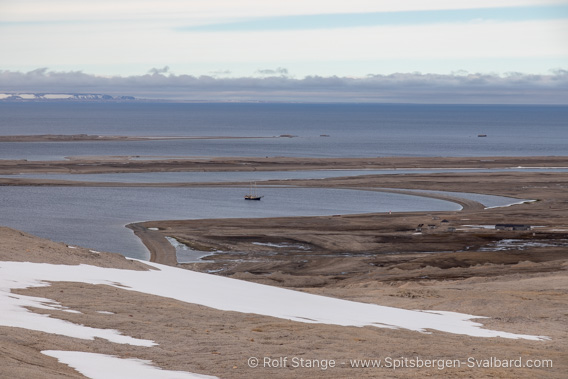
Kinnvika on Nordaustland: one of 43 landing sites in the protected areas.
What does it mean? In most national parks and nature reserves, tourists are no longer allowed to go ashore other than at 43 specially designated sites. There are official maps showing exactly where these sites are. At some of these 43 sites, no more than 39 people can go ashore at any one time, and at least 3 of them must be local guides. In some places, you are only allowed to move within certain boundaries, which are marked on the maps.
This applies to most national parks and nature reserves, but not all. It applies to the large national parks in the west and north of Spitsbergen (South Spitsbergen, Van Mijenfjord, North Spitsbergen, Wijdefjord) and most of the nature reserves (Northeast Svalbard, Southeast Svalbard, Ossian Sarsfjellet).
The map below illustrates this:
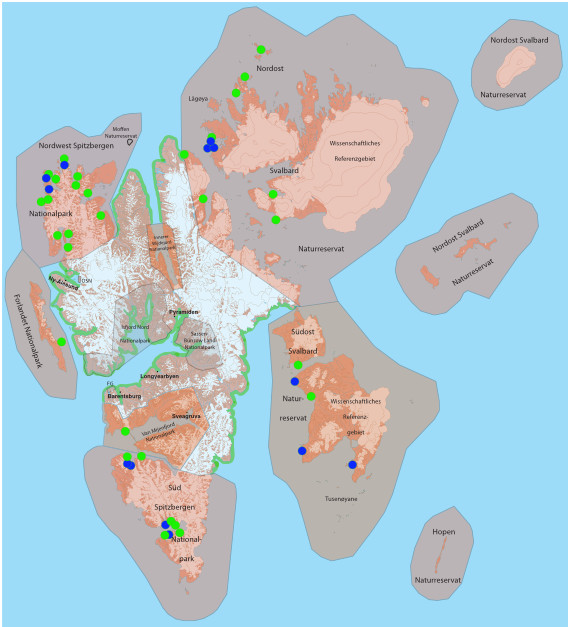
Regulatory changes from 2025. Details in the text.
Here is a larger version of the map.
The protected areas shown in red are closed to tourists from January 2025. The 43 places in these protected areas that will be open to tourists are marked with dots. The green dots are Landestellen without limitation of the number of persons (not more than 100 tourists at a time at a Landestelle is already good practice). The blaue points allow a maximum of 39 people ashore, including 3 guides.
Areas outside the protected areas remain accessible. These coastal areas are marked green on the map. This includes areas that are not part of a national park or nature reserve, but also the Isfjord National Park (Nordre Isfjord, Bünsow-Sassen) and the nature reserves Bjørnøya and Hopen. The two latter islands are not very important for tourism, but the large and varied Isfjord, in which Longyearbyen is located, is an important area with plenty of space and many interesting tourist possibilities. The same applies to areas that are not part of a national park or nature reserve, and these are large, interesting coastal areas.
When does this apply?
The rule does not apply permanently. In spring, from 1 January to 25 May, tourists are allowed to move on frozen, snow-covered ground in the protected areas, which are subject to a landing ban from 26 May. The lawmakers have thus opened the door to the increasingly popular “ski and sail” tourism (nice, one would have wished for such a differentiated approach elsewhere, too).

Ski and snowshoe tours are possible everywhere
on frozen, snow-covered ground until 25. May.
Who is this for? Private’ versus ‘touristic’
.
Finally, we need to be clear about who this applies to and who does not. The ban on landing in these national parks applies to commercial tour operators. It does not apply to people travelling privately, to scientists or other travellers (e.g. film teams) who are on their own. It does not matter where you live, and there is no distinction between ‘locals’ who live in Spitsbergen and visitors who live elsewhere, in Norway or in other countries. As soon as the trip is ‘touristic’, the landing ban applies, otherwise it does not, regardless of whether you live in Longyearbyen, on the Norwegian mainland or elsewhere in the world. This also applies regardless of nationality, as Norwegians and citizens of other countries are treated equally under the Spitsbergen Treaty.
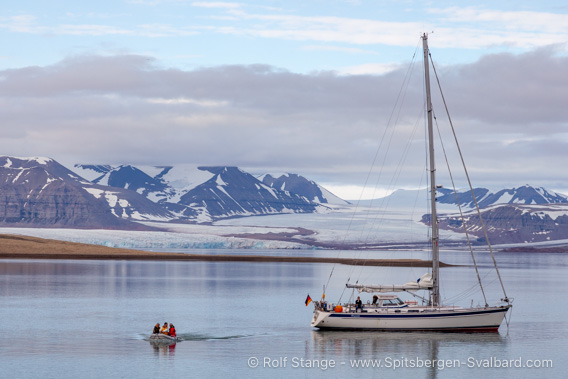
Private sailboat on a private voyage: can move on shore freely.
I use the term ‘tourist’ here in the sense of these new rules: if you are travelling as a ‘tourist’ in this sense, you may only use the 43 landing places on the map above in the protected areas; if you are travelling privately, you have a largely free choice there (within the framework of the otherwise applicable law, bird sanctuaries etc. must of course be respected). Of course you are a tourist if you are travelling on your own private sailing boat, but that is not the point here.
The definition of ‘tourist’ or ‘private’ offers potential for grey areas. A ‘tourist’ is anyone taking part in a journey made possible by paid services.
The implementation of this right remains to be seen, and I explicitly state that I am not a lawyer or anything like that. But after a careful reading of the original Norwegian legal texts (and not just some press releases or the like), this is how it appears to be at the moment, as the following examples show. With one exception, these illustrate voyages by ship; shore leave in remote areas is not relevant to other voyages anyway.
- Have you booked a cruise with a tour operator on a ship with a professional crew and guides? The trip is still a tourist trip, whether you are on board with 100 other passengers and a crew of 60 and are being treated like a star, or whether the crew and guides are just one person and you are peeling potatoes and setting sails yourself.
- Are you coming with your own sailboat? Maybe you have a few friends on board, but no one else? Congratulations, you are travelling privately and are free to choose your landing sites in the protected areas mentioned above, even away from the 43 sites open to tourists.
- Are you travelling on a chartered sailing boat, or have you chartered a boat in Longyearbyen? Perhaps you have a few friends on board, but no one else? Then the same applies here: You are travelling privately, and you are free to choose your landing places in the protected areas mentioned above, even away from the 43 places open to tourists. However, if you are chartering a boat commercially, you are approaching the ‘tourist’ limit and the landing sites will be restricted accordingly. If you are in any doubt, please check with the system master before you register, which is mandatory anyway, and decisions will be made on a case-by-case basis.
- Are you coming with a chartered sailing boat, or are you chartering a boat in Longyearbyen? Perhaps you have a few friends on board, plus a skipper or perhaps a guide? Even if all the travellers have been friends for a long time or are otherwise privately connected and therefore consider themselves to be a private group, no other participants can join: You are still travelling as tourists, in the sense that shore excursions are only permitted at the 43 designated sites in the protected areas.
- Would you like to hike in Prins Karls Forland alone or with your partner and friends, with a tent and backpack? This is the closest national park to Longyearbyen that falls under the rules (no tourist landings outside the 43 sites). You hire a tour operator in Longyearbyen to take you there, because you have to get there somehow.
For most people, this will be clear. Anyone who ventures near a grey area – this will mainly affect crews of sailing boats who perceive themselves as private, but make use of one or other paid service – should clarify with the Sysselmester in good time at the start of planning whether the assumption that you are travelling privately is also correct from an official point of view. You have to register with the Sysselmester in advance for the areas in question anyway.
Guide certification
The layman is amazed, the expert is surprised: ‘Guide’ is still not a protected profession in Svalbard, anyone can call themselves a guide and offer corresponding services there. Although there are already various certifications, none of them have yet been officially recognised or even prescribed by law.
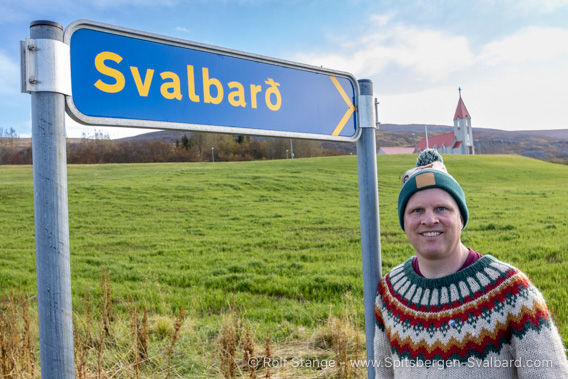
‘Guide’ is not (yet) a protected profession in Svalbard. Anyone who thinks they are suddenly in Svalbard in the north of Iceland should perhaps think about something else anyway 🤔🤪
Comment: This is still pending, although it has been under discussion for what seems like an eternity, and although it would probably have solved some of the problems from the outset if it had been introduced early and implemented sensibly. Whereas it used to be common sense that organised tourism led by knowledgeable guides was the way to go, the opposite is now happening: organised tourism is being restricted while private travellers are being given free rein. Private yachts are the main cause of problems, because they go everywhere, but often have neither the experience nor the knowledge of the rules and regulations, and like to make a campfire out of the protected wood of a cultural monument, or take a selfie while hugging a walrus (I am exaggerating slightly here, but I suppose you get the point). A well-implemented, mandatory certification scheme for guides – that might well include private groups, especially those with their own boats – who are responsible for good, rule-compliant practice, could have taken a targeted approach at an early stage. Unfortunately, this opportunity was missed.
Vessels in protected areas: Number of passengers, heavy fuel oil
Ships operating in national parks and nature reserves are not allowed to carry more than 200 passengers. Until 2024, this only applied to nature reserves.
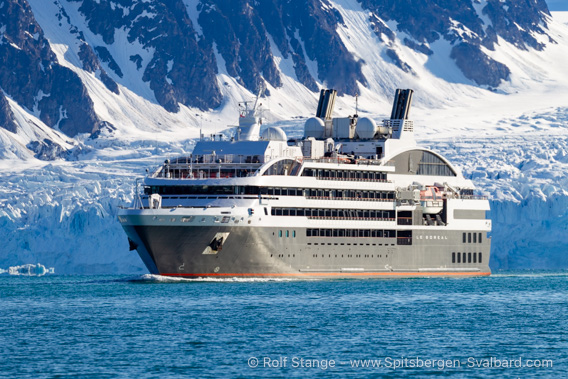
No ship may carry more than 200 passengers in the protected areas.
No vessel may carry heavy fuel oil (even in an unused tank) within the entire 12-mile zone in Svalbard. This has been introduced gradually since 2014, and the last transitional rules expired in 2024. The ban on heavy fuel oil applies to all ships, not just cruise ships.
Distance from polar bears
This is the second major issue that has caused controversy and concern.
From 2025, there are legal minimum distances: 300 metres for most of the year, 500 metres in spring (1 March-30 June). And there will be an obligation to take active evasive action: For example, if a ship is anchored or parked at the ice edge or in drift ice and a curious polar bear approaches, you must move away. This applies throughout Norwegian territory, i.e. in the twelve-mile zone around Svalbard. Polar bear observation and photography in Svalbard is thus only possible from these distances. With good equipment, it is possible to take good photos from 300 metres, but full-frame portraits of polar bears, which were possible until 2024, will no longer be possible in Svalbard.
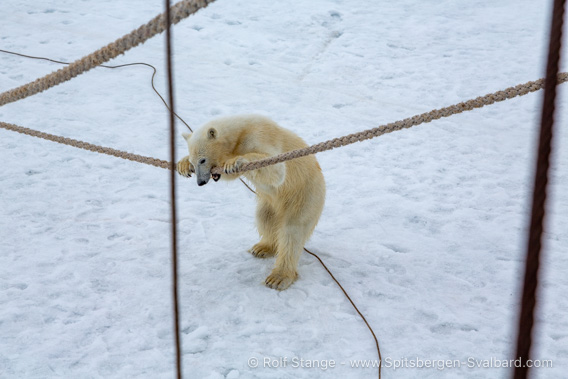
A curious polar bear examines a rope used to secure the ship to the ice edge.
Under current legislation, the rope would have to be retrieved to sail the ship away …
Norwegian law applies up to 12 nautical miles from the coast. This does not apply outside the 12-mile zone (territorial waters). This means that it is still possible to see polar bears at the edge of the drift ice outside the 12-mile zone. A trip to the edge of the drift ice is nothing new, of course, but it is and remains a possibility, and if you are lucky enough to be on the drift ice outside the 12-mile zone and a curious polar bear comes running towards the ship, you can enjoy the experience in a relaxed manner. However, you should be aware that you need to be lucky; polar bears are by no means seen on every trip to the drift ice.
Distances from walruses
From 2025, certain distances also apply to walruses: 150 m minimum distance from walrus colonies for boats, and a maximum speed of 5 knots for boats from 300 m. There is no legal minimum distance on land, but there is a recommended minimum distance of 30 metres and 150 metres for herds of cows and calves, which easily become nervous and panic at greater distances.
The general rule for all animals has been for many years and still is: do not disturb.
Bird sanctuaries and protected bird colonies
Sounds like a bit of a double entendre, but it is not. Bird sanctuaries or bird reserves are small protected areas that are seasonally closed to all visitors during the breeding season (defined as the period from 15 May to 15 August), including a 300-metre protection zone in the surrounding waters off the coast. These are mainly small islands where common eiders and other birds breed in large numbers; the only bird sanctuaries on the mainland are at Kapp Linné and Midterhuksletta in Bellsund. These bird sanctuaries have existed for a long time.

Brünich’s guillemots on a bird cliff in Raudfjord.
One of many colonies now subject to a speed limit.
A new feature is the large number of bird colonies near which boats are restricted to a maximum speed of 5 knots. This usually applies up to 500 metres from the shore. Official maps show which colonies are affected and the exact area where the speed limit applies. If you are navigating a ship or boat yourself, you should be aware of this as it may apply in places you would not expect.
Icebreaking
Icebreaking is prohibited. This refers to solid fjord ice that is connected to the coast. There are only a few exceptions, such as the shipping lanes to Longyearbyen, Barentsburg and Ny-Ålesund, and for the coastguard and Sysselmester. Icebreaking has been prohibited in the past and is now enshrined in new law, in itself it is not really new.
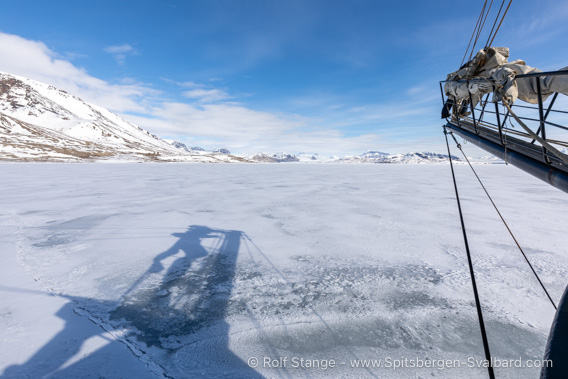
To the edge of the ice: fine! But no further. This is nothing new.
Drones
From 2025, drones are banned in all national parks and nature reserves. This includes the national parks in Isfjord and it also applies to underwater drones and drones moving on the ground.
Tents and camps
The permit requiremente for tents and camps have been extended.
Motorised traffic on fjord ice
The bans on driving on fjord ice that have been in place for some time are given a permanent legal basis. This applies in particular to the fjord ice in Tempelfjord, Billefjord, Van Mijenfjord and Storfjord. Motorised traffic (snow mobiles) is, with few exceptions, no longer allowed on fjord ice.
Non-motorised traffic (dog sleds, ski touring) is not affected.
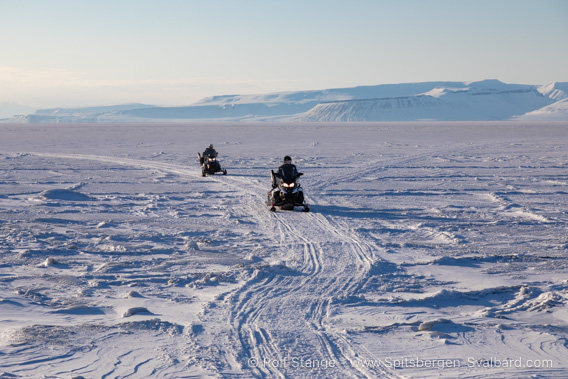
Motorised traffic on the fjord ice is strongly restricted. This is not new either.
BOOKS, CALENDAR, POSTCARDS AND MORE
This and other publishing products of the Spitsbergen publishing house in the Spitsbergen-Shop.
last modification: 2025-01-08 ·
copyright: Rolf Stange
